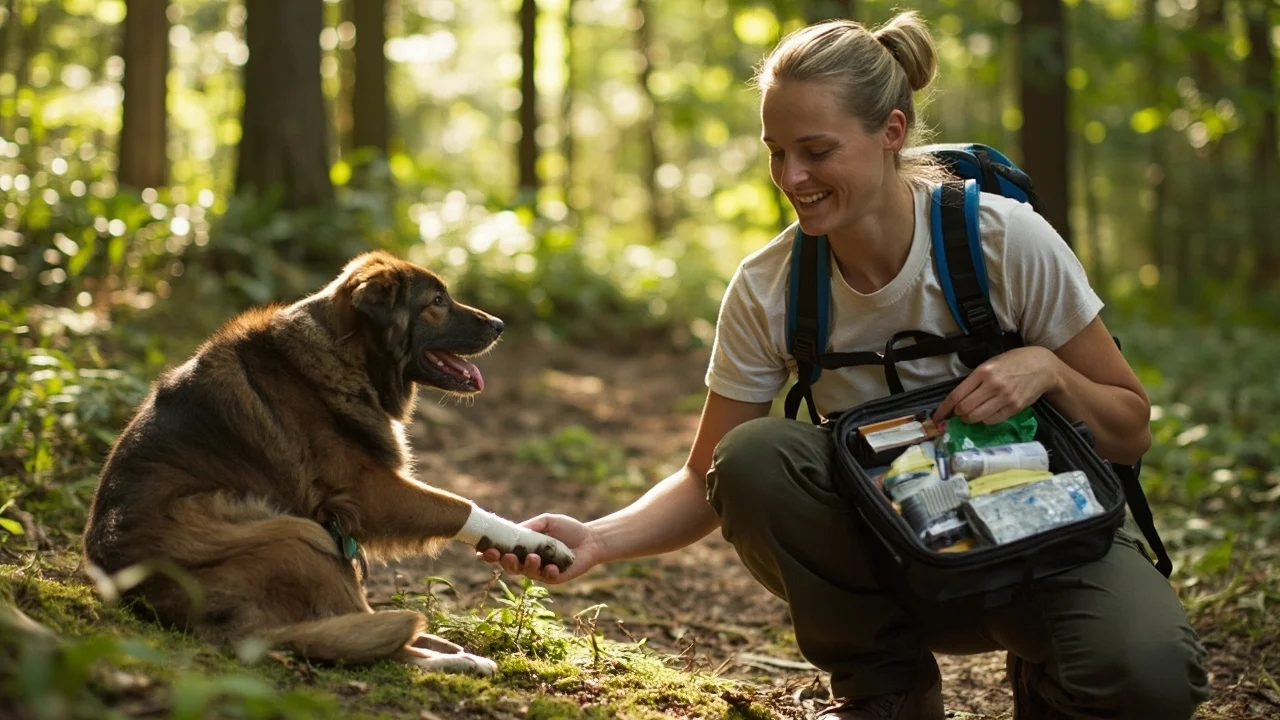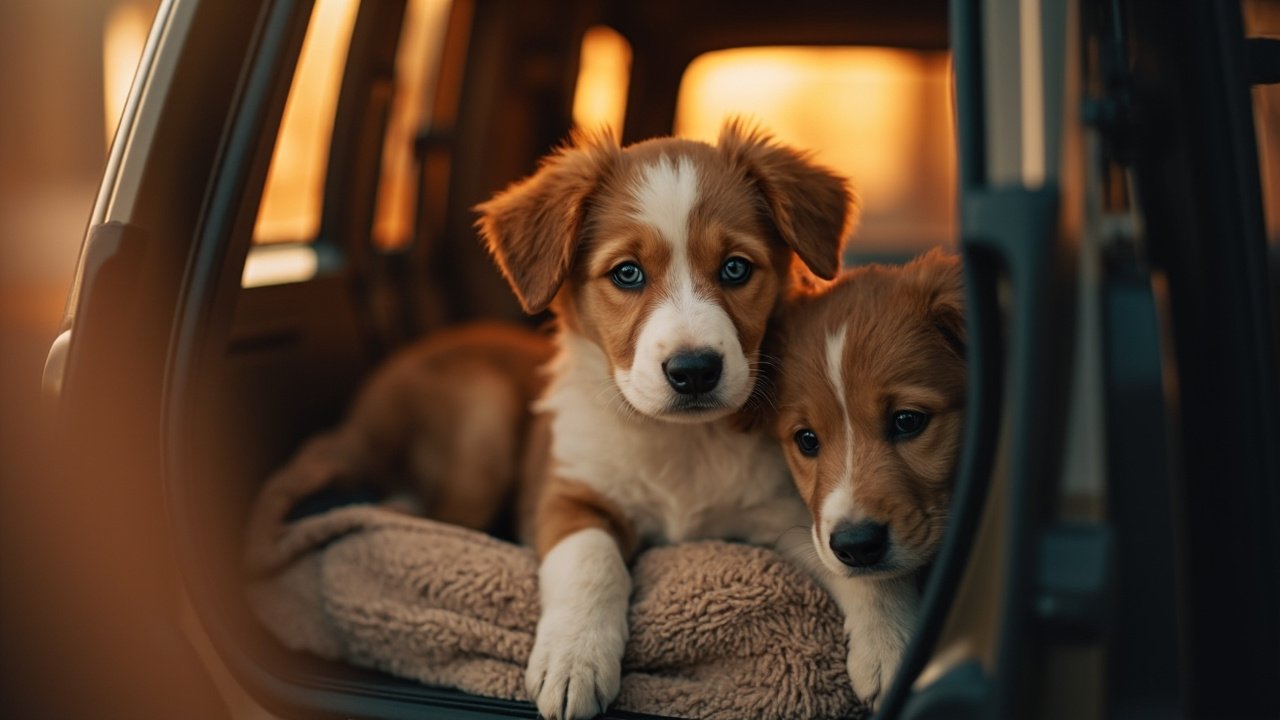Traveling with your pet can be a wonderful experience, but at the same time, it requires preparation. He who loves his pets, you know that, just like us, they may have to face the small, unforeseen events, such as a cut, insect bites, or even discomfort during the trip. At this time, the speed, and the knowledge of how to provide emergency first aid for pets you can make all the difference.
When you prepare properly, you can reduce the stress of unexpected situations and take care of your friend, in an efficient manner to be able to take it to a vet. In this article, we are going to discuss everything you need to know about emergency first aid for pets while on the road. With a simple, clear, and practical manner, you will understand how to prepare and what to do when the unexpected happens.
Table of contents-of Contents
That is, in the First-Aid Kit for your Pets?
First-aid kit for pets-this is a collection of the essential items that you should carry to always travel with your pet. The goal is to make sure that you will be able to deal with emergency situations that can arise in the course of the journey, and without causing a panic, or a waste of time.
During the trip, your pet may be exposed to a number of risks to the environment, and the stress of the day, a poor diet, or even in the extreme heat. You have a first aid kit is well-organized, you can prevent minor incidents from becoming something more serious, allowing you to serve your pet with a safe, until he gets professional help.
Why do you Have A First Aid Kit for Pets-it's not important!
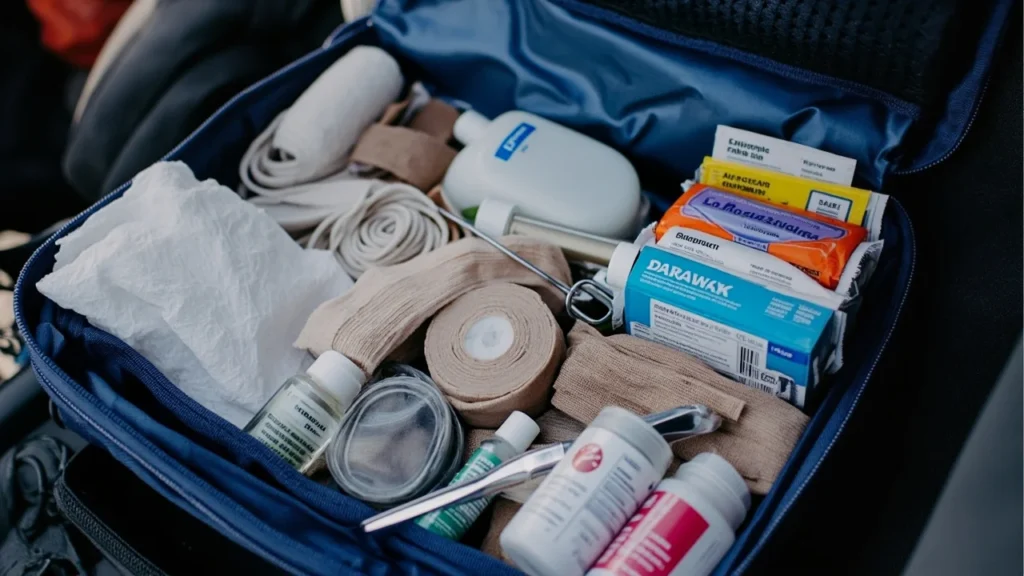
The unexpected happens all the time, and when you're on the go, those difficulties are likely to be even higher. In the presence of a set of emergency first aid for pets it offers you more than just peace of mind, she makes sure that you have the ability to act quickly and effectively in case of an emergency. The environment of the travel can be stressful for the animal, which can lead to unexpected behavior, such as injury, illness, or even an accident.
You have the know-how and the necessary materials for the hand and also makes sure that you know how to deal with the issue, while searching for the help that you need. After all, in many places, especially in more remote areas, with the arrival of the cat to the vet can take a long time, and at this moment, time is of the essence.
What you Can't Miss on Your First Aid Kit for your Pets?
1. Thermometer
The temperature of the body of an animal, and this is one of the first things to check in case of trouble. Each species has a normal body temperature, and the temperature for your pets can help you determine if your furry friend is having a fever, which may be a sign of an infection or other condition that is more serious. In the dog, the temperature is about 38°C to 39°C, but to the cats, she's a little low, between, or 38.1°C) and 38.7 degrees C.
When travelling, with a change of routine, and fever can arise for a number of reasons, such as stress or exposure to extremes in temperature. With a thermometer, and a veterinarian's portable, small, and easy-to-use, it can be an item that necessary component of your kit.
2. Gloves
Hygiene is a major concern when dealing with any injuries, discharge, and with the handling of the pet during times of stress. The gloves are essential to ensure that you are able to take care of your pet, without running the risk of being contaminated or to move the dirt to bring the hurt. They can also protect your pet against any of the bacteria and micro-organism which may be present in your hands.
In addition to this, if you need to apply the medicine, or to carry out treatment, the gloves will help to keep the area to be treated, more sterile, thus avoiding infection.
3. Sterile gauze, and Bandages
The injury is fairly common during the travel. Your pet can become injured while playing, or even when he is frightened by a sound in unexpected ways. A sterile gauze dressing or bandage is essential in order to cover the wound, stopping the bleeding and protecting it from external agents. When applied correctly, it can reduce pain and prevent complications.
The dressings or bandages are essential. They keep the wound is covered, and what is crucial so that your site does not come into contact with dirt, or bacteria, preventing infections.
4. Antiseptic or Alcohol to the Vet
The use of a specific product, to clean the sores, is critical to preventing infection. Even though the alcohol is common, in order to be effective, it can lead to pain and irritation when applied. The antiseptic or alcohol to the vet, on the other hand, it is specially formulated for the skin of the animal, helping you to clean without damaging the wound healing process. It can also be used to clean cuts, scrapes, or areas of inflammation.
It is worth noting that the excessive use of antiseptics may be harmful to the skin of the animal, therefore, to follow the guidance of your veterinarian.
5. Clamp
The clamp is a versatile tool and is used to remove objects that may have become trapped in the body of your pet. It is a thorn, a splinter from the tree, or even a piece of glass and tweezers to help remove the objects in an accurate and reliable. This can be especially important when your pet is out of the house, in an area where there's likely to be in contact with hazardous substances is increased.
The clamp is also useful in removing the parasites that are visible, such as ticks. You have a caliper of good quality, with a sharp point, and you need it, you can avoid the object is broken down in the middle of the process you will cause more damage to your pet.
6. Saline
It's one of the first choices in order to clean the injury, and the protection of the eyes and ears of the animal. The saline solution can be used to clean the eyes irritated by dust, or wash the wounds without causing irritation or pain to your pet. It is also a good choice to eliminate secretions from the nose or to aid in hydration, in case of severe vomiting or diarrhea.
The saline solution that is gentle, safe and secure, which can be used whenever you need to, especially when there are other options that are more specific.
Read more: The Top 5 Parks, Pet-Friendly place to Visit with Your Dog: your Fun is Guaranteed
7. Drug Basics
You have a limited amount of medication your pet may be useful in an emergency situation. This may include medications such as anti-inflammatory drugs to relieve pain, fever, or even a medication to combat an allergic reaction. However, I never give medications without the guidance of a veterinarian. Some of the drug may be toxic to animals, so it's important that you have a kit that's approved by the professionals and in veterinary medicine.
These medicinal products should be purchased only on the advice of your veterinarian, which will assess the needs of your pet, based on the kind, weight, and health history to it.
8. Carrying case
During the travel, for your pet feel more secure and comfortable if it is being shipped in one box for shipping. In addition to ensuring more comfort and safety for your pet, this box is a very useful tool in emergency situations, such as if you have to take him to the vet very quickly. Proper transport, prevents the animal to be hurt or to be hurt when you try to run away from the situation to de-stress.
Make sure that you choose a shipping box according to the size and weight of your pet, making sure that they have enough space to move around and settle in for the journey.
9. Feed and Water
For a long road trip, to keep your pet well-fed and hydrated is essential. Take the feed and water, enough to make sure that it feels comfortable and has enough power. Many pets get sick on long journeys, then offer small amounts of food to prevent problems. In addition, fresh water is essential to avoid dehydration, especially if the weather is hot and the path is long.
What to do in Emergency Situations?
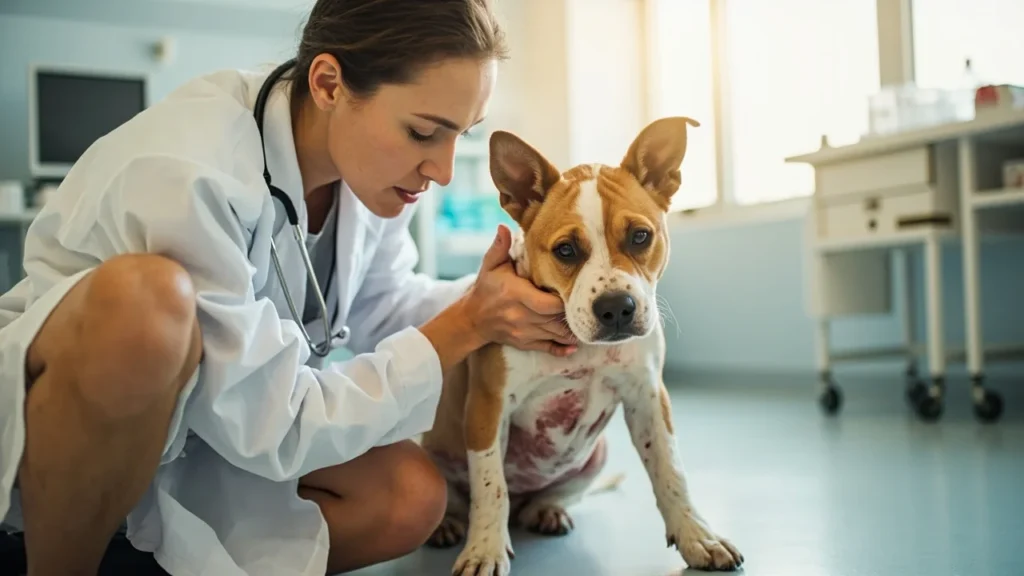
1. An accident with a Cut or Wound
The sections that are common in animals, especially in travel or outdoor trips. If your pet experiences a cut, the first step is to calm the animal, and then clean the wound with normal saline or water. After cleansing, apply a sterile gauze dressing or bandage to stop the bleeding and cover the wound. If the cut is deep, or if the bleeding is persistent, it is important to seek veterinary advice as soon as possible. In some cases, the bleeding can be severe and require surgery or other care to the most advanced.
2. Allergic Reactions
If your pet shows any signs of an allergic reaction such as swelling of the face, or difficulty breathing, it is essential that you act rapidly. The allergic reactions can be life-threatening in some cases so if you notice these signs, contact a veterinarian right away. If you are unsure of what it was, the causative agent of an allergy (such as an insect bite), please share this info with the professionals, as it can help in the treatment.
3. Nausea or Vomiting
Animals, like us, can suffer from motion sickness while traveling in a car. If your pet is vomiting or showing signs of discomfort, it is better to make a break for it to rest and hydrate. Don't feed your pet immediately after he vomits, as this can worsen the condition. If the problem persists, or if the pet continues to vomit, you'll want to check with a vet to make sure that there are no problems that are more serious.
To prevent any Accidents During the Trip
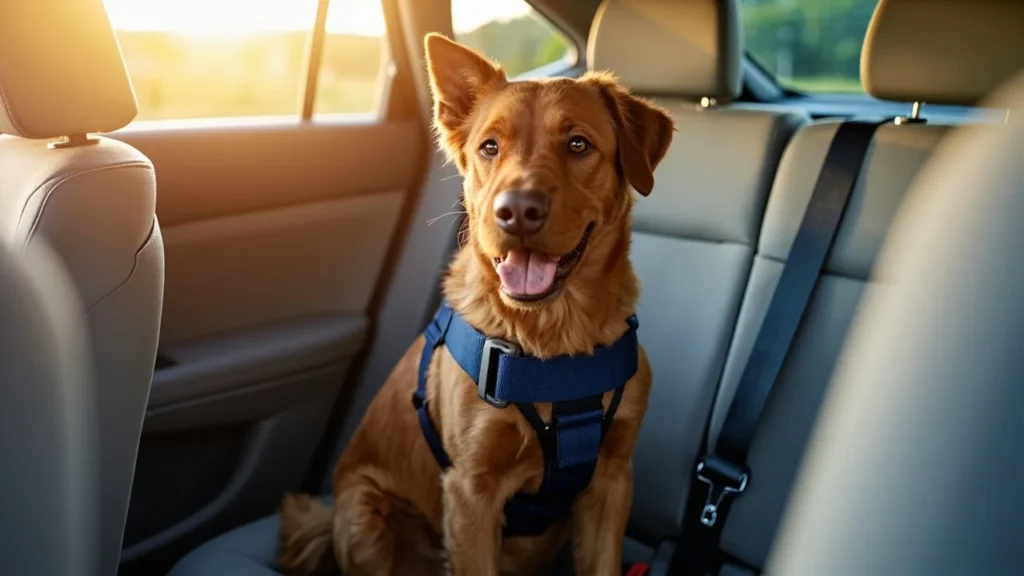
Prevention is always the best way to avoid problems on the road. Here are a few tips to ensure that your experience is safe and smooth for your pet:
- Safety in the car If you are going to travel by car, it will never leave your pet loose. The use of a safety belt, pet, or put them in a crate that is appropriate. This ensures that the animal is harm in the event of a sudden stop or an accident.
- Be careful with the heat: Never leave your pet in a car for a long time, especially on hot summer days. Even with the windows open, the heat could quickly escalate into the tank, which may prove to be fatal for the animal.
- Regular stops: During long trips, stop by from time to time, so that he may give rest to your pet, and providing clean water and allow it to make its own needs. This can help to reduce stress and fatigue.
Traveling with your pet, it's an experience that can be a lot of fun, but they also require special care. Be prepared for any possible emergency, a good first aid kit for your pets is vital to ensure that your four-legged friend is safe and well taken care of during your ride. And with the right materials, and with the proper knowledge, you can face any situation with calmness and confidence.
Remember, for the safety of your pet, it is in your hands. When you follow these simple guidelines and putting together a first aid kit appropriate to you, you'll be ready for any unforeseen event and will make sure that your trip will be more enjoyable for both of you.
The Main Points Discussed Were:
- The importance of a first aid kit for your pets.
- Non-essential items that should make up the first-aid kit.
- What to do in case of an emergency.
- The prevention of occupational accidents during travel with your pet.
FAQ – frequently Asked Questions
1. What should I do if my pet to suffer a hack? First of all, clean the wound with saline solution, and then apply a bandage to stop the bleeding. If the cut is deep, then look for a veterinarian right away.
2. How to prevent sickness in the car travel? To make the charts on a regular basis for your pet, if you spend only a few minutes, and then drink the water. Avoid feeding your pet in for a few hours prior to travel to prevent the sickness.
3. What do I do if my pet has an allergic reaction during a road trip? If you notice any signs of an allergic reaction, such as swelling or difficulty breathing, contact your veterinarian right away.
4. What are the things that are most important to include in your first aid kit for your pets? Sterile gauze, tweezers, thermometer, sanitizer, disposable gloves, and medications recommended by your veterinarian is a must.
5. Where can I find the first aid kit for your pets? You can find the kits that are ready in the shops of the veterinary products or build your own kit by purchasing the items separately.

